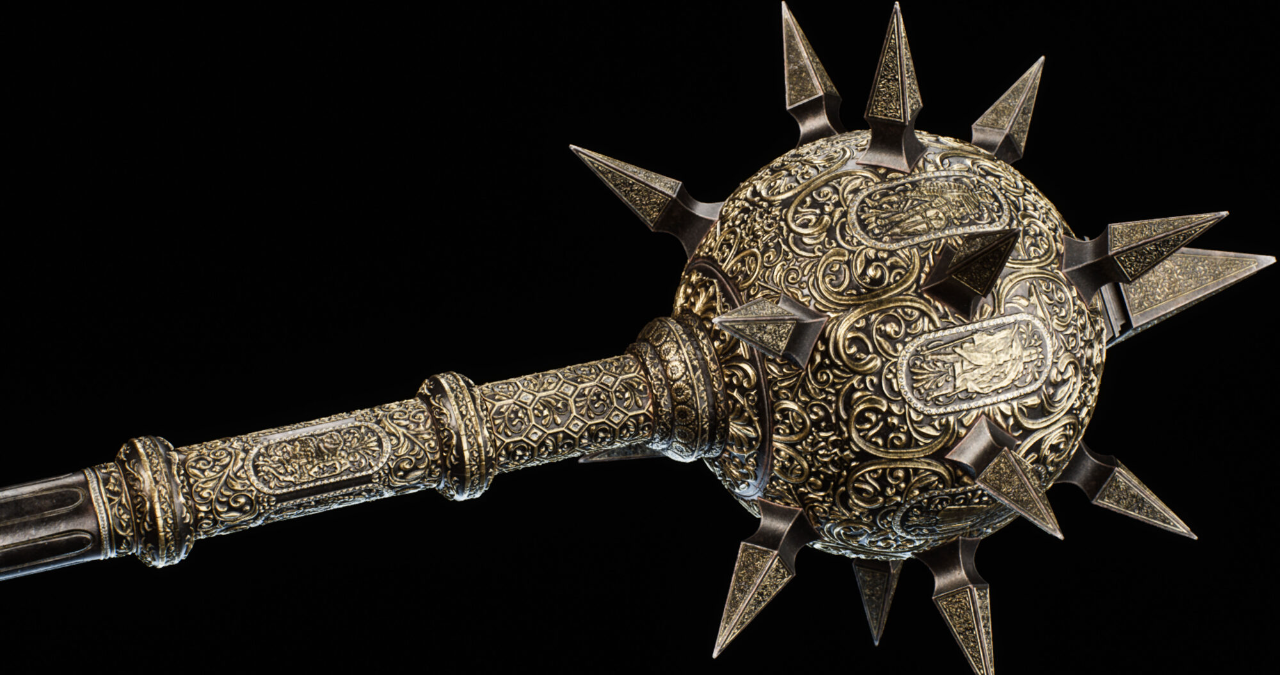Explore the history, design, and legacy of the morning star weapon—a brutal and iconic medieval arm used by knights and warriors. Learn its use, symbolism, and modern relevance.
The morning star weapon is one of those historical weapons that instantly capture the imagination. With its brutal spiked head and solid shaft, it’s often seen as the embodiment of medieval warfare and raw, destructive power. But this weapon is more than just a spiked club. It’s a symbol of innovation, intimidation, and battle strategy that shaped warfare in the Middle Ages and beyond.
In this in-depth exploration of the morning star weapon, we’ll walk through its origins, design, uses in combat, and how it compares to other medieval arms. Whether you’re a history buff, fantasy fan, or just curious about old-school weaponry, you’ll get a complete breakdown of this iconic piece of military hardware.
Origins of the Morning Star Weapon
The morning star weapon has its roots deep in medieval Europe, most prominently during the later Middle Ages. It emerged during a period when close-quarters combat required weapons that could penetrate armor and deliver high-impact blows. The morning star’s development was partly a response to the increasing use of plate armor and helmets on the battlefield.
Its name, “morning star,” likely stems from the spiked ball that resembles the rays of the morning sun. While poetic in name, the weapon was anything but peaceful. Early versions were often simple wooden clubs fitted with metal spikes, but as the weapon evolved, it began to incorporate metal shafts and more refined engineering.
There’s debate among historians as to whether the morning star was primarily a military weapon or also used ceremonially. Some examples, richly decorated and inlaid with precious metals, were likely used by nobility as symbols of power and dominance rather than in battle.
Anatomy of a Morning Star Weapon
At first glance, a morning star might look like a mace or even a flail, but its construction is unique. The key feature is the spiked head, which sets it apart from a traditional blunt weapon. These spikes served both to inflict serious trauma and to pierce armor, making the morning star devastating against both flesh and steel.
A typical morning star weapon includes three main parts:
- Head: Usually a metal ball fitted with multiple spikes.
- Shaft: Made from either wood or metal, designed for durability and grip.
- Grip or Pommel: Often wrapped in leather or fitted with metal rings for better handling.
Some versions were one-handed, while others were two-handed for greater power. The larger two-handed morning stars were often used in siege warfare or against cavalry, where range and force were crucial.
The Morning Star vs. Other Medieval Weapons
Comparing the morning star weapon to other medieval arms like the flail, mace, or war hammer offers interesting insights. While all these weapons were designed for blunt trauma, the morning star’s spikes added a layer of armor-penetration that the others lacked.
Unlike a flail, which has a chain connecting the spiked ball to the handle, the morning star is rigid. This gives it more control but slightly less reach. Against heavily armored foes, the morning star had a distinct advantage due to the concentrated force delivered by its spikes.
In terms of weight and handling, it sat somewhere between a mace and a war hammer. It was heavy enough to deal serious damage but still usable in relatively fast succession by a trained fighter. That combination made it a favorite for knights and foot soldiers alike.
How the Morning Star Weapon Was Used in Combat
In battle, the morning star weapon was all about brute force combined with strategic targeting. The weapon excelled in up-close scenarios, especially when facing heavily armored enemies. Knights often used it to strike at vulnerable spots in an opponent’s armor, such as the neck, joints, and faceplates.
Its spiked head made it especially effective against helmets and chainmail. Unlike a sword, which could glance off armor, the morning star crushed and tore. This meant that even a glancing blow could incapacitate an enemy, causing deep puncture wounds or concussions.
Soldiers needed significant strength and skill to wield a morning star effectively. Training focused on building upper-body endurance and mastering the precise timing needed to swing the weapon without leaving oneself open to counterattack.
Symbolism and Cultural Impact of the Morning Star
Beyond the battlefield, the morning star weapon has a strong cultural and symbolic presence. In many depictions of medieval warfare in films, books, and video games, the morning star is often shown as the weapon of choice for ruthless warriors or dark knights. It has become a pop culture symbol for savage medieval combat.
Religious and political symbolism also attached itself to the weapon. In some cases, morning stars were carried during parades or rituals as representations of authority and divine justice. Their design even influenced ceremonial weapons and regalia used in various European courts.
Modern fantasy and historical reenactment communities continue to embrace the morning star. From Renaissance fairs to tabletop RPGs, this weapon is seen as a brutal but noble implement of war.
Morning Star Weapon in Popular Culture
If you’ve played games like Skyrim, Dungeons & Dragons, or seen shows like Game of Thrones, you’ve probably seen a morning star weapon in action. It’s almost always wielded by a strong, sometimes villainous character, reinforcing the idea that this is not a weapon for the faint-hearted.
Its dramatic appearance and deadly effectiveness make it a favorite for character design in both video games and fantasy literature. Whether used by paladins of justice or dark warlords, the morning star adds gravitas and menace to any arsenal.
The weapon has also appeared in comic books, historical documentaries, and toy collections. It continues to be a favorite in medieval museums and exhibitions, where visitors are drawn to its dangerous allure.
Crafting and Reproducing the Morning Star Today
Modern blacksmiths and craftsmen still recreate the morning star weapon using traditional methods and materials. Whether for collectors, reenactors, or museums, these replicas are often made with high-quality steel and carefully designed to match historical references.
Creating a morning star requires more than just welding spikes onto a ball. The balance, weight distribution, and structural integrity must be carefully engineered. Authentic replicas are functional weapons, not just decorative items.
Hobbyists who create morning stars for cosplay or theatrical use often use lightweight materials like resin or aluminum. These replicas are safer for use in performances but maintain the intimidating appearance of the real thing.
Differences Between One-Handed and Two-Handed Morning Stars
The one-handed morning star was ideal for mounted knights or foot soldiers who needed to carry a shield in the other hand. These versions were shorter, lighter, and faster to maneuver. They allowed for quick jabs and were often used in duels or close melee.
The two-handed morning star, on the other hand, was a beast. With a longer shaft and heavier head, it was capable of delivering devastating strikes capable of breaking bones through armor. These were often used in siege warfare, where maximum force was necessary to break through enemy defenses.
Both versions had their pros and cons, but their fundamental purpose was the same: to dominate in hand-to-hand combat with overwhelming physical power.
Morning Star Weapon in Historical Records
While not as commonly mentioned as swords or bows, the morning star does appear in various medieval manuscripts and military inventories. Some historical sources detail battles where morning stars were used to great effect, especially by infantry units.
The Swiss and Germans were known for their use of spiked clubs similar to the morning star. Some records even describe battlefield tactics where entire lines of soldiers used spiked weapons to break enemy formations.
Artifacts recovered from battlefields and archaeological sites give us insight into how widespread the morning star really was. These finds show variations in design based on region and military tradition, suggesting that the weapon was adapted to suit different combat needs.
Maintenance and Care for Morning Star Weapons
Keeping a morning star in top condition was crucial for its effectiveness. Warriors had to regularly inspect the spikes for damage and make sure the shaft was free from cracks or warping. Any looseness between the head and the shaft could spell disaster in battle.
Cleaning the weapon after use was also important. Blood and moisture could cause rust, especially on the spikes. Medieval soldiers used oil and cloth to maintain their gear, much like modern firearm maintenance.
Modern collectors should follow similar steps. Regular oiling, proper storage, and handling the weapon with care can preserve its condition for decades. It’s not just about owning a piece of history; it’s about respecting the craftsmanship behind it.
Morning Star Weapon Safety and Training Today

Today, learning to use a morning star weapon is mostly limited to martial arts schools that specialize in historical European combat. These organizations teach students how to wield various medieval weapons safely and effectively.
Due to its dangerous design, live training is often done with blunted or padded versions. This allows students to understand the movement and technique without risking serious injury. Training includes footwork, defensive posture, and controlled strikes.
For those interested in stage combat or reenactment, the morning star is both a challenge and a crowd-pleaser. Its weight and complexity demand respect, but its appearance ensures it will always make an impact.
Table: Morning Star vs Other Medieval Weapons
| Weapon | Primary Feature | Pros | Cons |
|---|---|---|---|
| Morning Star | Spiked Head | Armor penetration, heavy damage | Slower, needs strength |
| Flail | Chain-link ball | Unpredictable, hard to block | Hard to control |
| Mace | Blunt head | Easier to use, durable | Less effective vs armor |
| War Hammer | Flat/pick end head | Pierces armor, precision | Limited striking range |
Quotes About the Morning Star Weapon
“The morning star did not ask for elegance; it demanded obedience through sheer brutality.”
“To wield a morning star is to embrace chaos in its most refined form.”
FAQs About the Morning Star Weapon
What is a morning star weapon used for?
The morning star weapon was primarily used in medieval combat to penetrate armor and deliver powerful blows. Its spiked head made it especially effective against heavily armored foes.
How is a morning star different from a mace?
While both are blunt weapons, the morning star has spikes, which makes it more effective at piercing armor. The mace has a smooth or flanged head designed for impact rather than penetration.
Was the morning star used by knights?
Yes, knights and foot soldiers both used the morning star. Its one-handed and two-handed versions made it versatile on the battlefield.
Is the morning star weapon historically accurate?
Absolutely. Numerous historical artifacts and records confirm the use of morning stars throughout Europe in the late Middle Ages.
Can you buy a morning star today?
Yes, replicas of the morning star weapon are available through historical weapon dealers, blacksmiths, and online collectors’ markets. Some are purely decorative, while others are functional reproductions.
Conclusion: The Lasting Legacy of the Morning Star Weapon
The morning star weapon is more than just a relic of the past; it’s a powerful symbol of a time when warfare was personal, brutal, and deeply tied to craftsmanship. Its unique design, practical effectiveness, and cultural legacy make it one of the most fascinating weapons in history.
From medieval battlefields to modern reenactments, the morning star continues to capture the imagination and admiration of warriors, historians, and fans alike. If you ever find yourself holding one, remember—you’re holding a piece of a very fierce past.


